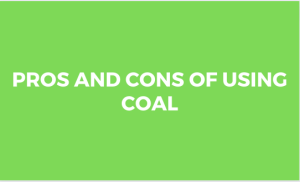Image source: climatecentral.org
Most of the oil has been considered economically recoverable since it lies deep underground and it is mixed with large amounts of bitumen, a tarry substance, sand, and water forming oil sands or tar sands. The mined sand is processed to remove the bitumen and then refined into oil.
Canada has the second-largest oil reserve occupying 170 billion barrels. Most of the tar sand oil produced is used for transportation. This article highlights the pros and cons of oil sands, let’s have a look at them.
Pros:
1. A secure source of energy: It provides a secure and source of energy to Canadian citizens. Canada has the second-largest oil reserve in the world making its oil supply unlimited.
2. Source of foreign revenue: Oil sands are the number one source of foreign revenue for Canada. It supplies oil to the US and provides economic gain to Canada. Albert sand oils generate huge profits for the country.
3. Repair environmental changes: The topsoil material removed in the mining area is kept in reserve and used later to restore the mined land once bitumen is processed. Syncrude Company spends more than $100 million annual to restore land in the mined area.
4. Economic growth: Sand oil from Alberta has spurred a lot of growth recovering the country’s economy. It also boosts the standards of living of people working in the oil sand fields.
5. Low prices: Crude oil extracted from bitumen processed can fit into existing energy infrastructure and this helps to keep oil prices down.
6. Job creation: The oil sand provides thousands of jobs to the local community.
7. Minimize GHG emissions: It leads to reduced emission of GHG gases through the use of CCS technology.
8. Indirectly affects other sectors: Investment in oil sands has contributed to the growth of the manufacturing sector, financial services, wholesale trade, and transportation sector.
9. Stability: Canada and Saudi Arabia can provide a stable source of energy to the world.
10. Less than 5%: There is less than 5% of the available oil which has already been produced.
Cons:
1. The threat to wildlife: Waste products from oil sands are highly toxic and can be dumped into ponds posing a threat to wildlife and marine life.
2. Limited reserves: The oil sand reserves are limited. The current global reserve occupies around 1.3 trillion barrels which are estimated to be 40 years of oil supply based on the current consumption rate.
3. Emission of greenhouse gases: Oil sands are too deep and the extraction of these oils lead to the emission of a high amount of carbon gases and other greenhouse gases.
4. Affects ecosystem: Clearing of trees, brush, topsoil, and clay on oil sand deposit areas affects the ecosystem of the local animal species.
5. Destruction of forests: Construction of pipeline system leads to the destruction of forests. There is also a concern that the natural gas system which is built along the Mackenzie Valley can be diverted to oil sand fields along the Northwest Territories increasing greenhouse emissions.
6. Expensive: The extraction process requires a risky and expensive pipeline system, heavy investment in modern technological equipment for carbon capture and storage (CCS) making the whole extraction process expensive.
7. High amounts of water: The process requires a large amount of water and chemicals to wash the sands. For each barrel of oil produced, an approximate amount of 2 to 4.5 times of water is required.
8. Overdependence: Oil sand makes 47% of the total oil used in Canada and overdependence on this oil can have some impact on the country. It is like putting too many eggs in one basket.
9. GHG emission: Alberta has about 10% of Canada’s population and it emits the most GHG emissions compared to any other province.
10. Risk of cancer: Leaks into tailing ponds or rivers from the tar sands pipe system can increase the risk of cancer among the people working in the oil sand fields.



